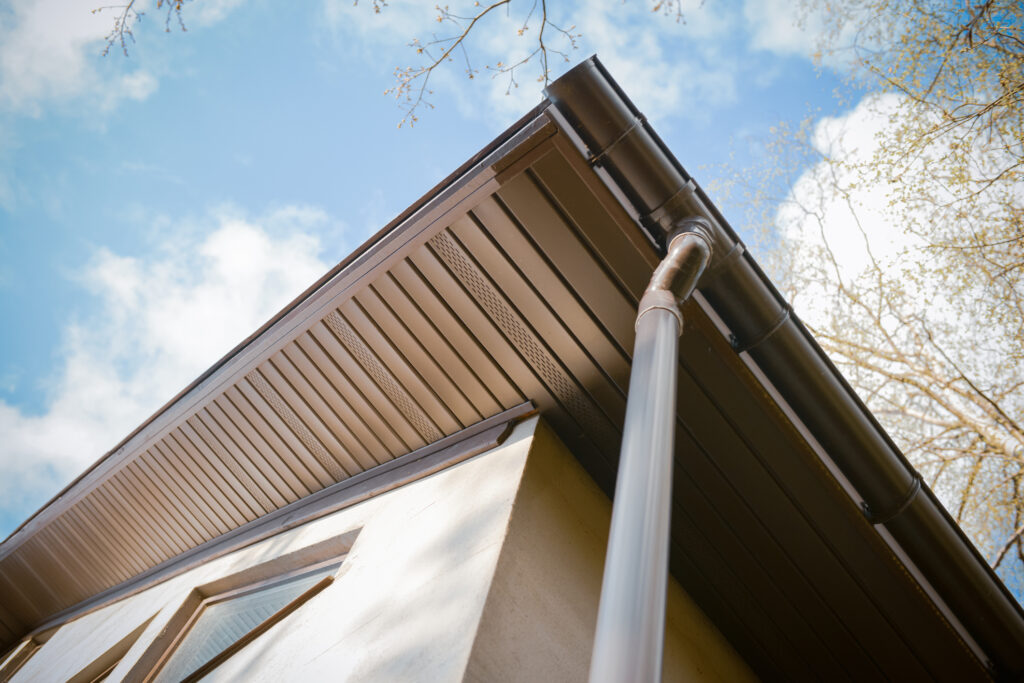11 Components of a Successful Spouting System
Your gutters are an essential part of your roof, designed to let water drain away without letting it sit and cause damage to the structure. When your gutters work as they should, you probably never give them a second thought. However, it’s worth knowing what makes up your spouting system, as there’s more to it than you’d think. Here are the most important components of your spouting system and what they do.
1. Gutters
You’ll think of this when you think of your guttering system. These long, rounded pipes collect rainwater as it runs off your roof. When they’re clear and not being blocked by debris or ice dams, they’re able to collect the water and let it run away from the roof.
Guttering is either available in regular 10-foot lengths or as seamless gutters that are cut to fit. Both have advantages, so when fitting new gutters, you’ll need to compare the different types and see what would work for you.
2. Downspouts
Once the rainwater has been collected in the gutters, it needs to be directed down into the drains at ground level. The downspouts in your guttering system will direct the water down safely without allowing it to come into contact with the building itself.
These will typically come in 10-foot lengths and be connected, so they’re long enough to reach the ground. The pipes will be spaced out every few feet along the gutter, so water can flow freely.
3. Miters
A miter is an angled part designed to allow guttering to be connected around corners. There are inner and outer miters, which do slightly different jobs. The inner miter sits inside the gutter pipe and is designed for when valleys drain into a gutter. An outer miter will sit on the outside of the pipe and will hold it together where the gutter goes around a corner.
4. Gutter Guards
A gutter guard isn’t something you’ll see on all guttering systems, but it’s something that you’ll want to strongly consider. These are connected to the gutters and can resemble a mesh on top of the pipe or a brush in it. These guards are there to catch any debris that may fall into the gutter and block it.
They’re especially helpful if there’s a tree close by the roof, as it’s so easy for the wind to catch leaves and blow them into the gutter. The guards will stop the majority of debris from getting into the gutters, keeping them clear and free-flowing without you having to clean them out.
5. Fasteners
Fasteners are what are going to hold your guttering system to your building itself. It’s essential that you pick the right fasteners for the job, as they need to hold the gutters up even if they’re full of water, snow, or debris.
Fasteners like gutter screws should be placed through fascia boards and be strong enough to hold the spouting system up. The miters should be fastened on with aluminum rivets as they won’t corrode. Stainless steel zip screws are used to secure downspouts for similar reasons.
6. Splash Guards
A splash guard is designed to stop water from splashing out of your gutter and down the side of your house. That’s especially useful when you have heavy rain in your area. A splash guard is made of prepainted aluminum and is usually placed anywhere a valley drains into your gutter. These guards will typically be painted to match the gutters themselves.
7. Outlet Tubes
An outlet tube is a section that will connect your gutter pipe to the downspout below it. There are different shapes available, and you’ll want to pick one that will fit your downspout. For example, a rectangular downspout will need a rectangular outlet tube.
8. Downspout Straps
You’ll need to consider keeping your spouting system in place during any storms in your area, and downspout straps can be a part of that system. Every ten feet of the downspout on your home should have downspout straps, attaching it securely to the building.
These can either be bought pre-fabricated, or they can be made on-site. Either way, you can get straps that match the color of your guttering. The metal used to create the straps should be thicker than the metal used in the guttering.
9. End Caps
Like splash guards, these will be made in colors that match the guttering so they blend in. They’re installed at each end of the guttering tube to force water to flow down the downspouts rather than out the side.
An end cap is useful on guttering systems, as these are what help stop water draining out of the side of the gutter itself. To attach an end cap, they should be installed with aluminum rivets and then sealed to prevent leaks.
1. Elbows
An elbow is a guttering piece that’s designed to help guide guttering over obstacles on your roof. For example, an elbow can be used to redirect a downspout back towards the wall of the building when it’s had to be built out over the roof eaves. It’s a vital piece of equipment as it will help you keep water flowing, even over less-than-optimal angles.
11. Sealant
Finally, you’ll need a sealant to prevent leaks in your guttering system. This is especially important for aluminum guttering, as this material isn’t able to be soldered. In this case, an elastomeric sealant will be the right option for you. They’re more resistant to UV light and will not degrade as quickly.
Final Spouting System Takeaways
There are a lot of parts that make up your spouting system, and it’s important to know how they all work. Now that you know the important parts, you can know when a part needs to be repaired or replaced to protect your roof. Contact your local roofing contractor today if you’re interested in installing slate roofing.


